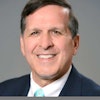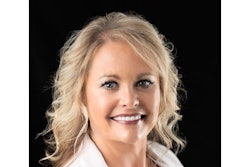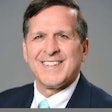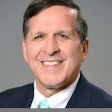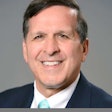It creeps in during the late summer months, usually around the first week of September. The mood inside dental practices across the country subtly shifts. First, patients begin calling in with cancellations. The gaps in your schedule become harder to fill. Hygiene chairs sit empty, and team members whisper that perennial curse word again, “Sucktember.”
This nickname, passed around like folklore, carries with it the weight of a self-fulfilling prophecy. September, the story goes, is a dead zone for dentistry. Parents are consumed with back-to-school routines. Patients vanish into postsummer fatigue. Production dips. Morale follows. It truly sucks.
 Joanne Miles, RDA.
Joanne Miles, RDA.
But what if the myth is the problem, not the month? What if September isn’t doomed at all, but simply misunderstood?
When we examine it more closely, the assumptions behind the “Sucktember” slump begin to unravel. In their place emerges a new possibility. It’s that this transitional month, with its return to routine and focus, might actually be among the most strategic windows of the year … if practices are willing to shift their mindset.
The myths and reality of September
The myth of “Sucktember” survives because it’s familiar. It offers a tidy explanation for empty chairs and missed goals. But myths, by nature, oversimplify. When we look more closely, the story doesn’t hold up.
Myth No. 1: Everyone’s too busy with back-to-school activities.
It’s easy to picture September as a whirlwind. So many mornings with forgotten backpacks, frantic carpools, and last-minute supply lists. The assumption follows naturally: Families are too overwhelmed to prioritize dental care.
But this view overlooks a more nuanced reality. In fact, back-to-school season is one of the few times each year when health rises to the top of a parent’s priority list. According to the U.S. Centers for Disease Control and Prevention, more than 51 million school hours are lost annually due to dental-related illness. It’s no surprise that September sees a spike in pediatric and adolescent health visits, including dental exams.
Positioning September as a family reset month, especially around health routines, is not just strategic, it’s essential. Promoting preventive dentistry during this time helps families avoid dental-related emergencies later in the school year.
Myth No. 2: Everyone’s still on vacation.
The idea that September is slow because patients are enjoying late-summer travel simply doesn’t hold up. While some vacations stretch into early September, most people return home, kids go back to school, and routines resume. That consistency actually increases patient reliability.
In fact, many patients return from vacation with a refreshed mindset and a desire to take care of health matters they postponed during the summer. With a stable routine in place, practices can see higher case acceptance and fewer no-shows. The key to taking advantage of this? Team mindset and proactive planning.
Myth No. 3: Seasonal shifts mean fewer appointments.
Yes, the seasons change in September, but that doesn’t mean people stop prioritizing health. In fact, the onset of fall is a great opportunity to remind patients that chronic conditions don’t take a seasonal break.
According to the U.S. National Institute of Dental and Craniofacial Research, more than 47% of adults age 30 and up have some form of periodontal disease. Chronic conditions like diabetes, cardiovascular disease, and Alzheimer’s disease are all linked to oral health.
Use this as a talking point: “These conditions don’t take time off. Your dental care shouldn’t either.”
How to take September from slump to surge
Shift your mindset. Start with your own perspective and your team’s. Words matter. Instead of thinking of this month as “Sucktember,” consider changing your mindset and adopting mantras like, “September Success,” “September Surge,” or “Thriving in September.” Practicing positive affirmations as a team sets the tone and the energy for the month. Think it’s silly? Try it out and you might be surprised by the results.
Start planning in July. Consider hosting a September strategy session. Rally your team early, review past performance, and set clear, measurable goals for September. You want to make sure the entire team is aligned on key performance indicators. Track production per hour, case acceptance, new patient conversion, and hygiene reactivation. Appoint a “September Success Leader” who will own accountability, keep energy high, and drive daily progress. Also consider incentives. Offer your team rewards for hitting production and scheduling goals that truly matter to them.
Re-template your September schedule. Optimizing your schedule should not wait until September begins. Review it now and make intentional changes. Reserve blocks for high-value procedures. Build in time for smile design, implant, and aligner consults. Avoid bottlenecks at the end of the month. Balance production across all four weeks.
Launch reengagement campaigns. Start your “use it or lose it” insurance campaign in August. Since most insurance plans reset at year’s end, you don’t want to wait until December to start this conversation. Use your patient communication software to filter patients who have unused benefits and no balances. Develop targeted emails and text messages to those patients to remind them about their unused insurance benefits that will expire when the year ends, then follow up with phone calls after two weeks to those who haven’t responded.
Tap into preventive needs and the aging population. By 2034, the U.S. will have more adults over the age of 65 than children under 18. September is an excellent time to:
- Reserve more scaling and root planing and perio maintenance blocks
- Engage older patients who prefer quieter seasons for appointments
- Launch a reactivation campaign for patients with outstanding treatment needs in this demographic
- Practice scripting with your team to create urgency and book ahead
Launch a community outreach campaign. Give patients a feel-good reason to engage with your practice in September. Consider hosting a “smile and share” drive (collect coats, food, or supplies). Offer whitening, a treatment discount, or other incentives. You can have a lot of fun with this if you decorate, take photos and post updates on your practice’s social media pages.
Cultivate a unified team culture. To drive results in September, it’s essential to cultivate a unified, purpose-driven team culture. Start by holding intentional morning huddles that focus on key metrics and align the team on daily goals. Empower your admin team to proactively promote remaining insurance benefits and encourage same-day scheduling. Treatment coordinators should be equipped to “preclose” larger cases as early as July and August to build strong momentum.
Use the quieter summer months to streamline operations by cleaning up recare lists, outstanding accounts receivable, and insurance claims. Don’t forget to celebrate the wins. Track reactivated patients, daily production achievements, and community donations. Recognizing these milestones fuels motivation and reinforces the behaviors that drive success.
September is what you make it
The idea of “Sucktember” is just that … an idea, a story, a state of mind. Stories, however, can be rewritten. When you dispel the myths, plan ahead, and engage your team with purpose and positivity, you can turn a traditionally slow month into a breakout season for growth.
Let’s stop waiting for the year-end rush and start making September a strategic win. Start now, plan smart, and bring your team along for the ride. Together we can turn “Sucktember” into “Super September.” Let’s make it your strongest month yet.
Joanne Miles, RDA, is the lead investment-grade practices business adviser for Productive Dentist Academy. She has decades of industry experience, including working with private multilocation practices. Miles can be reached at [email protected] or on LinkedIn.
The comments and observations expressed herein do not necessarily reflect the opinions of DrBicuspid.com, nor should they be construed as an endorsement or admonishment of any particular idea, vendor, or organization.



